Week in images: 27-31 May 2024
Friday, 31 May 2024 12:10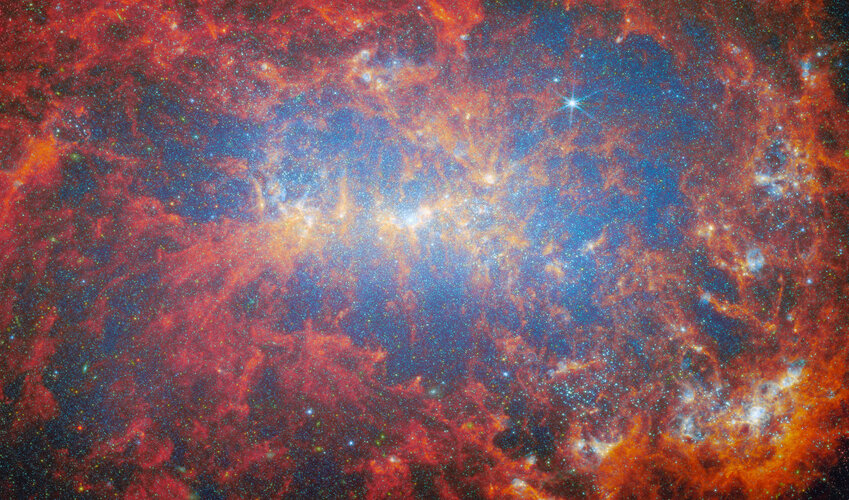
Week in images: 27-31 May 2024
Discover our week through the lens
Earth from Space: Madagascar jellyfish
Friday, 31 May 2024 07:00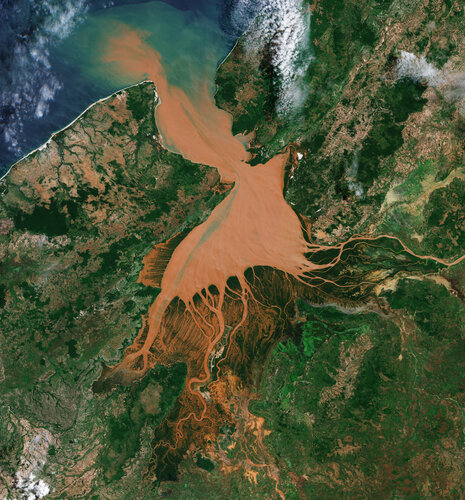 Image:
Resembling a reddish jellyfish, the Mahajamba Bay in Madagascar is imaged by Copernicus Sentinel-2.
Image:
Resembling a reddish jellyfish, the Mahajamba Bay in Madagascar is imaged by Copernicus Sentinel-2. YPSat checked in for Ariane 6 flight
Friday, 31 May 2024 06:12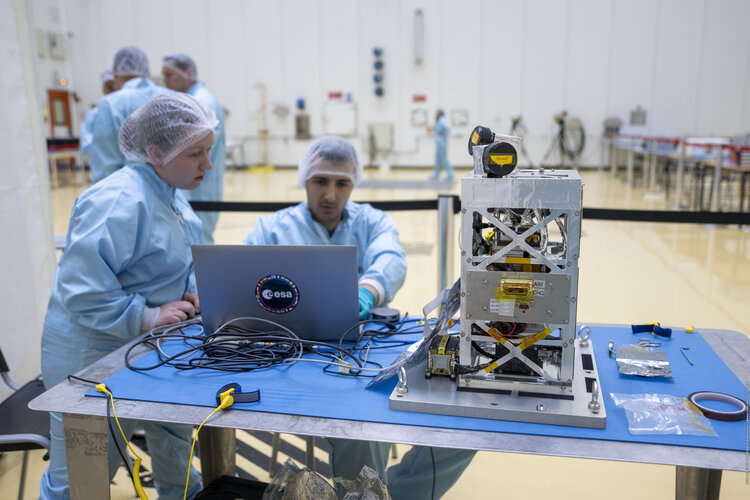 Image:
YPSat checked in for Ariane 6 flight
Image:
YPSat checked in for Ariane 6 flight New milestone for the Gateway: life inside Lunar I-Hab
Friday, 31 May 2024 05:38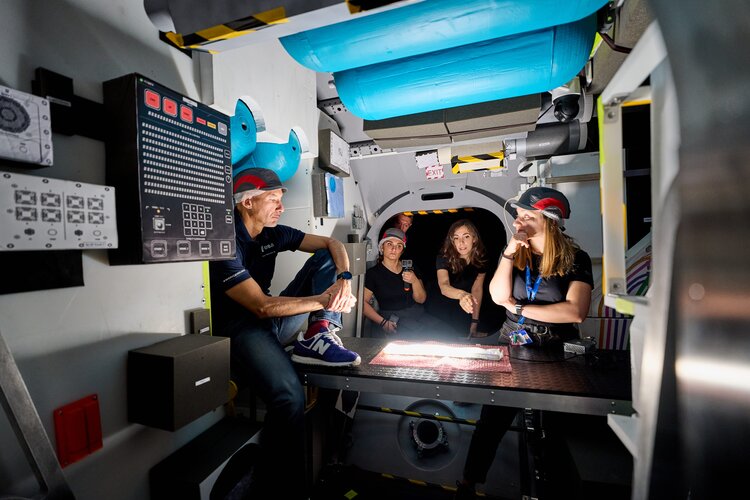
Lunar I-Hab, the next European habitat in lunar orbit as part of the Gateway, has recently undergone critical tests to explore and improve human living conditions inside the space module.
Russian Progress 88 cargo spacecraft launched to ISS
Friday, 31 May 2024 02:24 A Russian Soyuz rocket launched early Thursday morning put an un-piloted spacecraft safely in orbit headed for the International Space Station. NASA said it carries roughly three tons of supplies.
The 5:43 a.m. EDT launch was from the Baikonur Cosmodrome in Kazakhstan.
Following a two-day orbit the spacecraft will automatically dock to the space-facing port of the Poisk module at
A Russian Soyuz rocket launched early Thursday morning put an un-piloted spacecraft safely in orbit headed for the International Space Station. NASA said it carries roughly three tons of supplies.
The 5:43 a.m. EDT launch was from the Baikonur Cosmodrome in Kazakhstan.
Following a two-day orbit the spacecraft will automatically dock to the space-facing port of the Poisk module at South Korea targets Mars mission with new space centre
Friday, 31 May 2024 02:24 South Korea aims to make a Mars landing by 2045, President Yoon Suk Yeol said Thursday, outlining plans to spend about $70 billion over the coming decades on space exploration.
The newly created Korea Aerospace Administration (KASA) will lead the drive to make the land of K-pop a new space powerhouse, following the United States, Russia and China.
"I have always believed that there is an
South Korea aims to make a Mars landing by 2045, President Yoon Suk Yeol said Thursday, outlining plans to spend about $70 billion over the coming decades on space exploration.
The newly created Korea Aerospace Administration (KASA) will lead the drive to make the land of K-pop a new space powerhouse, following the United States, Russia and China.
"I have always believed that there is an Space Force narrows anti-jam satellite contest to Boeing, Northrop Grumman
Thursday, 30 May 2024 21:02

Swarming for success: Starling completes primary mission
Thursday, 30 May 2024 19:18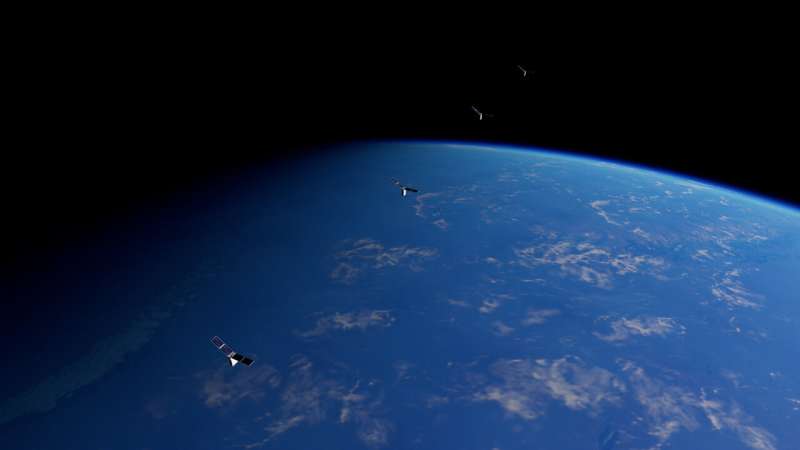
After 10 months in orbit, the Starling spacecraft swarm successfully demonstrated its primary mission's key objectives, representing significant achievements in the capability of swarm configurations.
Swarms of satellites may one day be used in deep space exploration. An autonomous network of spacecraft could self-navigate, manage scientific experiments, and execute maneuvers to respond to environmental changes without the burden of significant communications delays between the swarm and Earth.
"The success of Starling's initial mission represents a landmark achievement in the development of autonomous networks of small spacecraft," said Roger Hunter, program manager for NASA's Small Spacecraft Technology program at NASA's Ames Research Center in California's Silicon Valley. "The team has been very successful in achieving our objectives and adapting in the face of challenges.
Young Student Explores Future Potential of Radioisotope Power Systems
Thursday, 30 May 2024 16:08 Power to Explore is a NASA essay writing competition organized by Future Engineers. It invites K-12 students to envision an RPS-powered space mission to a "dark, dusty, or distant" destination.
In 250 words or less, we were asked to describe:
+ the mission destination and goals br>
+ the importance of radioisotope power systems in the mission br>
+ our unique "power" that will help
Power to Explore is a NASA essay writing competition organized by Future Engineers. It invites K-12 students to envision an RPS-powered space mission to a "dark, dusty, or distant" destination.
In 250 words or less, we were asked to describe:
+ the mission destination and goals br>
+ the importance of radioisotope power systems in the mission br>
+ our unique "power" that will help First Annual Space Piracy Conference Scheduled for February 2025
Thursday, 30 May 2024 16:08 The Center for the Study of Space Crime, Policy, and Governance (CSCPG) announced it will present the first annual Space Piracy Conference on February 11 and 12, 2025. This by-invitation-only symposium will take place in Annapolis, Maryland. The conference will gather leading policy thinkers, financiers, executives, and entrepreneurs to discuss the risks of piracy in space and potential solution
The Center for the Study of Space Crime, Policy, and Governance (CSCPG) announced it will present the first annual Space Piracy Conference on February 11 and 12, 2025. This by-invitation-only symposium will take place in Annapolis, Maryland. The conference will gather leading policy thinkers, financiers, executives, and entrepreneurs to discuss the risks of piracy in space and potential solution Legal Framework for Military Space Operations Detailed in New Manual
Thursday, 30 May 2024 16:08 Humans have always been explorers, making space the next frontier. But what laws govern outer space? Is it a lawless expanse?
Duncan Blake, a lecturer at UNSW Canberra, emphasizes that space is not without rules. The Woomera Manual on the International Law of Military Space Activities and Operations (Woomera Manual) aims to clarify the application of existing international laws to military
Humans have always been explorers, making space the next frontier. But what laws govern outer space? Is it a lawless expanse?
Duncan Blake, a lecturer at UNSW Canberra, emphasizes that space is not without rules. The Woomera Manual on the International Law of Military Space Activities and Operations (Woomera Manual) aims to clarify the application of existing international laws to military Redwire boosts AI investment for enhanced space domain awareness
Thursday, 30 May 2024 16:08 Redwire Corporation (NYSE: RDW), a leader in space infrastructure for the next generation space economy, announced an expanded investment in its artificial intelligence (AI) strategy. The company is funding research projects through a newly formed coalition that focuses on the use of AI in space operations. Redwire is one of the founding corporate sponsors of The Center for AEroSpace Autonomy Re
Redwire Corporation (NYSE: RDW), a leader in space infrastructure for the next generation space economy, announced an expanded investment in its artificial intelligence (AI) strategy. The company is funding research projects through a newly formed coalition that focuses on the use of AI in space operations. Redwire is one of the founding corporate sponsors of The Center for AEroSpace Autonomy Re 






